Related Research Articles

Norway, officially the Kingdom of Norway, is a Nordic country in Northern Europe whose mainland territory comprises the western and northernmost portion of the Scandinavian Peninsula; Mainland Norway and the remote island of Jan Mayen as well as the archipelago of Svalbard form Metropolitan Norway. The subantarctic Bouvet Island is a dependent territory of the Kingdom of Norway. Norway also lays claim to the Antarctic territories of Queen Maud Land and Peter I Island.
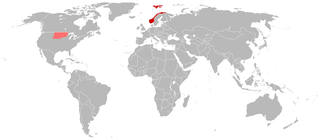
Norwegian is a North Germanic language spoken mainly in Norway, where it is the official language. Along with Swedish and Danish, Norwegian forms a dialect continuum of more or less mutually intelligible local and regional varieties; some Norwegian and Swedish dialects, in particular, are very close. These Scandinavian languages, together with Faroese and Icelandic as well as some extinct languages, constitute the North Germanic languages. Faroese and Icelandic are not mutually intelligible with Norwegian in their spoken form because continental Scandinavian has diverged from them. While the two Germanic languages with the greatest numbers of speakers, English and German, have close similarities with Norwegian, neither is mutually intelligible with it. Norwegian is a descendant of Old Norse, the common language of the Germanic peoples living in Scandinavia during the Viking Era.

Oslo is the capital and most populous city of Norway. It constitutes both a county and a municipality. During the Viking Age the area was part of Viken, the northernmost Danish province. Oslo was founded as a city at the end of the Viking Age in the year 1040 under the name Ánslo, and established as a kaupstad or trading place in 1048 by Harald Hardrada. The city was elevated to a bishopric in 1070 and a capital under Haakon V of Norway around 1300. Personal unions with Denmark from 1397 to 1523 and again from 1536 to 1814 reduced its influence. After being destroyed by a fire in 1624, during the reign of King Christian IV, a new city was built closer to Akershus Fortress and named Christiania in the king's honour. It was established as a municipality (formannskapsdistrikt) on 1 January 1838. The city functioned as the capital of Norway during the 1814–1905 union between Sweden and Norway. From 1877, the city's name was spelled Kristiania in government usage, a spelling that was adopted by the municipal authorities only in 1897. In 1925 the city, after incorporating the village retaining its former name, was renamed Oslo. In 1948 Oslo merged with Aker, a municipality which surrounded the capital and which was 27 times larger, thus creating the modern, vastly enlarged Oslo municipality.

Roald Engelbregt Gravning Amundsen was a Norwegian explorer of polar regions and a key figure of the Heroic Age of Antarctic Exploration. He led the first expedition to traverse the Northwest Passage by sea, from 1903 to 1906, and the first expedition to the South Pole in 1911. He led the first expedition proven to have reached the North Pole in a dirigible in 1926. He disappeared while taking part in a rescue mission for the airship Italia in 1928.
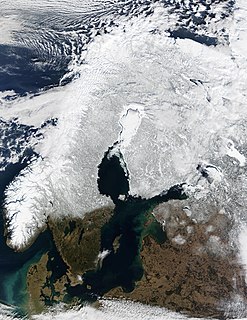
Scandinavia is a subregion in Northern Europe, with strong historical, cultural, and linguistic ties. The term Scandinavia in local usage covers the three kingdoms of Denmark, Norway, and Sweden. The majority national languages of these three belong to the Scandinavian dialect continuum, and are mutually intelligible North Germanic languages.
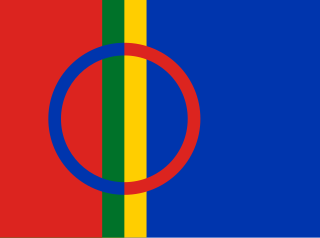
The Sámi people are an indigenous Finno-Ugric people inhabiting Sápmi, which today encompasses large northern parts of Norway, Sweden, Finland and the Kola Peninsula within the Murmansk Oblast of Russia. The Sámi have historically been known in English as Lapps or Laplanders. Sámi ancestral lands are not well-defined. Their traditional languages are the Sámi languages which are classified as a branch of the Uralic language family. The terms "Lapp" and "Lapland" are regarded as offensive by some Sami people, who prefer the area's name in their own language, "Sápmi".

Svalbard is a Norwegian archipelago in the Arctic Ocean. Situated north of mainland Europe, it is about midway between continental Norway and the North Pole. The islands of the group range from 74° to 81° north latitude, and from 10° to 35° east longitude. The largest island is Spitsbergen, followed by Nordaustlandet and Edgeøya. While part of the Kingdom of Norway since 1925, Svalbard is not part of geographical Norway proper; administratively, the archipelago is not part of any Norwegian county, but forms an unincorporated area administered by a governor appointed by the Norwegian government, and a special jurisdiction subject to the Svalbard Treaty that is, unlike Norway proper, outside of the Schengen Area, the Nordic Passport Union and the European Economic Area.

Trondheim, historically Kaupangen, Nidaros and Trondhjem, is a city and municipality in Trøndelag county, Norway. It has a population of 199,039 (27/02/2020), and is the third most populous municipality in Norway, although the fourth largest urban area. Trondheim lies on the south shore of Trondheim Fjord at the mouth of the River Nidelva. The city is dominated by the Norwegian University of Science and Technology (NTNU), the Foundation for Scientific and Industrial Research (SINTEF), St. Olavs University Hospital and other technology-oriented institutions.

Bergen, historically Bjørgvin, is a city and municipality in Vestland county on the west coast of Norway. At the end of 2019, the municipality's population was 283,929, and the Bergen metropolitan region had about 420,000 inhabitants. Bergen is the second-largest city in Norway. The municipality covers 465 square kilometres (180 sq mi) and is on the peninsula of Bergenshalvøyen. The city centre and northern neighbourhoods are on Byfjorden, 'the city fjord', and the city is surrounded by mountains; Bergen is known as the 'city of seven mountains'. Many of the extra-municipal suburbs are on islands. Bergen is the administrative centre of Vestland county. The city consists of eight boroughs: Arna, Bergenhus, Fana, Fyllingsdalen, Laksevåg, Ytrebygda, Årstad, and Åsane.
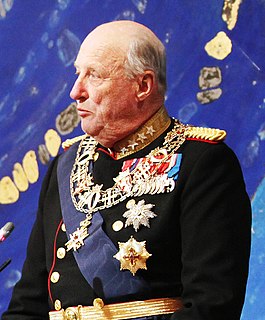
Harald V is the King of Norway, having ascended the throne upon the death of his father King Olav V on 17 January 1991.

The Norway national football team represents Norway in men's international football and is controlled by the Norwegian Football Federation, the governing body for football in Norway. Norway's home ground is Ullevaal Stadion in Oslo and their head coach is Lars Lagerbäck. In February 2019, they were ranked by FIFA at No. 48., Norway has participated three times in the FIFA World Cup, and once in the UEFA European Championship (2000).
Norwegians are a North Germanic ethnic group native to Norway. They share a common culture and speak the Norwegian language. Norwegian people and their descendants are found in migrant communities worldwide, notably in the United States, Canada, Australia, Argentina, Chile, Uruguay, Brazil, Mexico, New Zealand and South Africa.

The German occupation of Norway during World War II began on 9 April 1940 after German forces invaded the neutral Scandinavian country of Norway. Conventional armed resistance to the German invasion ended on 10 June 1940 and Nazi Germany controlled Norway until the capitulation of German forces in Europe on 8/9 May 1945. Throughout this period, Norway was continuously occupied by the Wehrmacht. Civil rule was effectively assumed by the Reichskommissariat Norwegen, which acted in collaboration with a pro-German puppet government, the Quisling regime, while the Norwegian king Haakon VII and the prewar government escaped to London, where they acted as a government in exile. This period of military occupation is in Norway referred to as the "war years" or "occupation period".

BIBSYS is an administrative agency set up and organized by the Ministry of Education and Research in Norway. They are a service provider, focusing on the exchange, storage and retrieval of data pertaining to research, teaching and learning – historically metadata related to library resources.

Denmark–Norway, also known as the Dano–Norwegian Realm, the Oldenburg Monarchy, or the Oldenburg realms, was an early modern multi-national and multi-lingual real union consisting of the Kingdom of Denmark, the Kingdom of Norway, the Duchy of Schleswig, and the Duchy of Holstein. The state also claimed sovereignty over two historical peoples: Wends and Gutes. Denmark–Norway had several colonies, namely the Danish Gold Coast, the Nicobar Islands, Serampore, Tharangambadi, and the Danish West Indies.
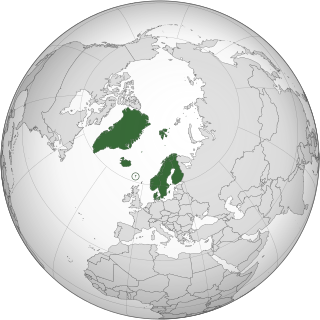
The Nordic countries, or the Nordics, are a geographical and cultural region in Northern Europe and the North Atlantic, where they are most commonly known as Norden. The term includes Denmark, Finland, Iceland, Norway and Sweden, as well as Greenland and the Faroe Islands, which are both part of the Kingdom of Denmark. Åland Islands (Finland), as well as Jan Mayen and the archipelago of Svalbard that belong to Norway, are also included. Bouvet Island is sometimes not considered a part of the Nordic countries due to its geographical location. Several regions in Europe such as the Northern Isles of Scotland share cultural or ethnic ties with the Nordic nations, but are not considered to be part of the Nordic countries. Scandinavians, who comprise over three quarters of the region's population, are the largest group, followed by Finns, who comprise the majority in Finland; other ethnic groups are the Greenlandic Inuit, the Sámi people, and recent immigrants and their descendants. The native languages Swedish, Danish, Norwegian, Icelandic, and Faroese are all North Germanic languages rooted in Old Norse. Native non-Germanic languages are Finnish, Greenlandic and several Sámi languages. The main religion is Lutheran Christianity.
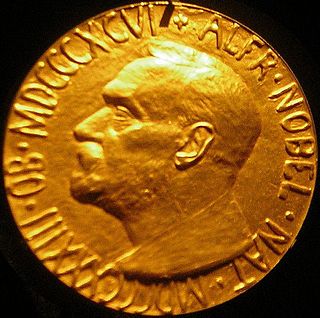
The Nobel Peace Prize is one of the five Nobel Prizes established by the will of Swedish industrialist, inventor, and armaments manufacturer Alfred Nobel, along with the prizes in Chemistry, Physics, Physiology or Medicine, and Literature. Since March 1901, it has been awarded annually to those who have "done the most or the best work for fraternity between nations, for the abolition or reduction of standing armies and for the holding and promotion of peace congresses".

The 2011 Norway attacks, referred to in Norway as 22 July or as 22/7, were two sequential lone wolf domestic terrorist attacks by Anders Behring Breivik against the government, the civilian population, and a Workers' Youth League (AUF) summer camp, in which 77 people were killed.

Anders Behring Breivik, since 2017 legally Fjotolf Hansen and also known by his pseudonym Andrew Berwick, is a Norwegian far-right terrorist who committed the 2011 Norway attacks. On 22 July 2011, he killed eight people by detonating a van bomb amid Regjeringskvartalet in Oslo, then shot dead 69 participants of a Workers' Youth League (AUF) summer camp on the island of Utøya. In July 2012, he was convicted of mass murder, causing a fatal explosion, and terrorism.

The COVID-19 pandemic in Norway is part of the worldwide pandemic of coronavirus disease 2019 caused by severe acute respiratory syndrome coronavirus 2. On 26 February 2020, the virus was confirmed to have spread to Norway. The number of cases increased rapidly during the month of March, thereby necessitating a number of safety measures aiming to achieve physical distancing to be introduced on 12 March. The first death attributed to COVID-19 was documented on the same day. Most confirmed cases that were traced to outside Norway were Norwegian tourists returning from Austria and Italy.
References
- ↑ Ottosen, Rune; Røssland, Lars A.; Østbye, Helge (2002). "Etablering av partipressen – journalistikkens barndom (1860–1920)". Norsk pressehistorie (in Norwegian). Oslo: Det Norske Samlaget. p. 47. ISBN 82-521-5750-5.
| This article about a Norwegian newspaper is a stub. You can help Wikipedia by expanding it. |